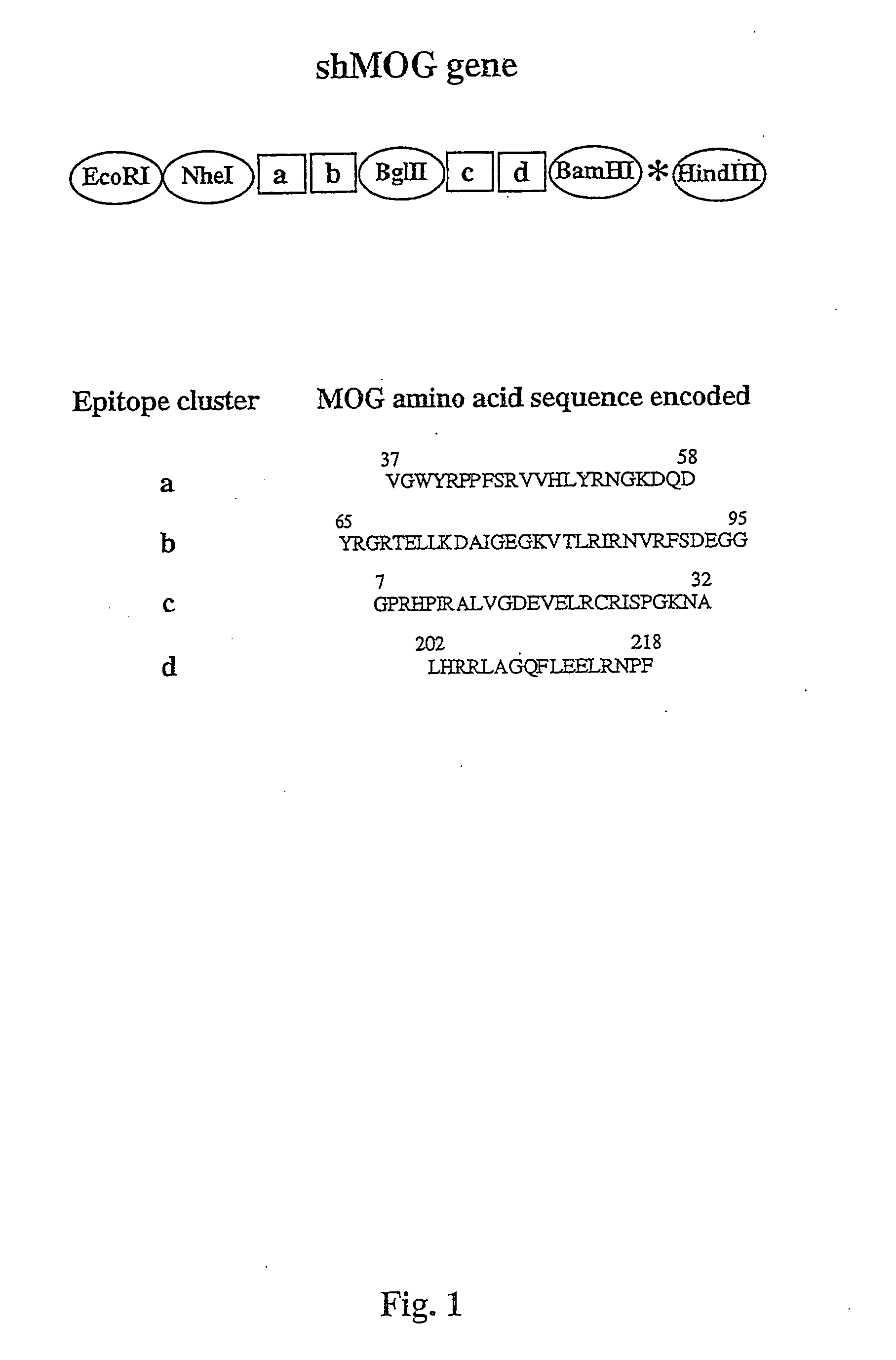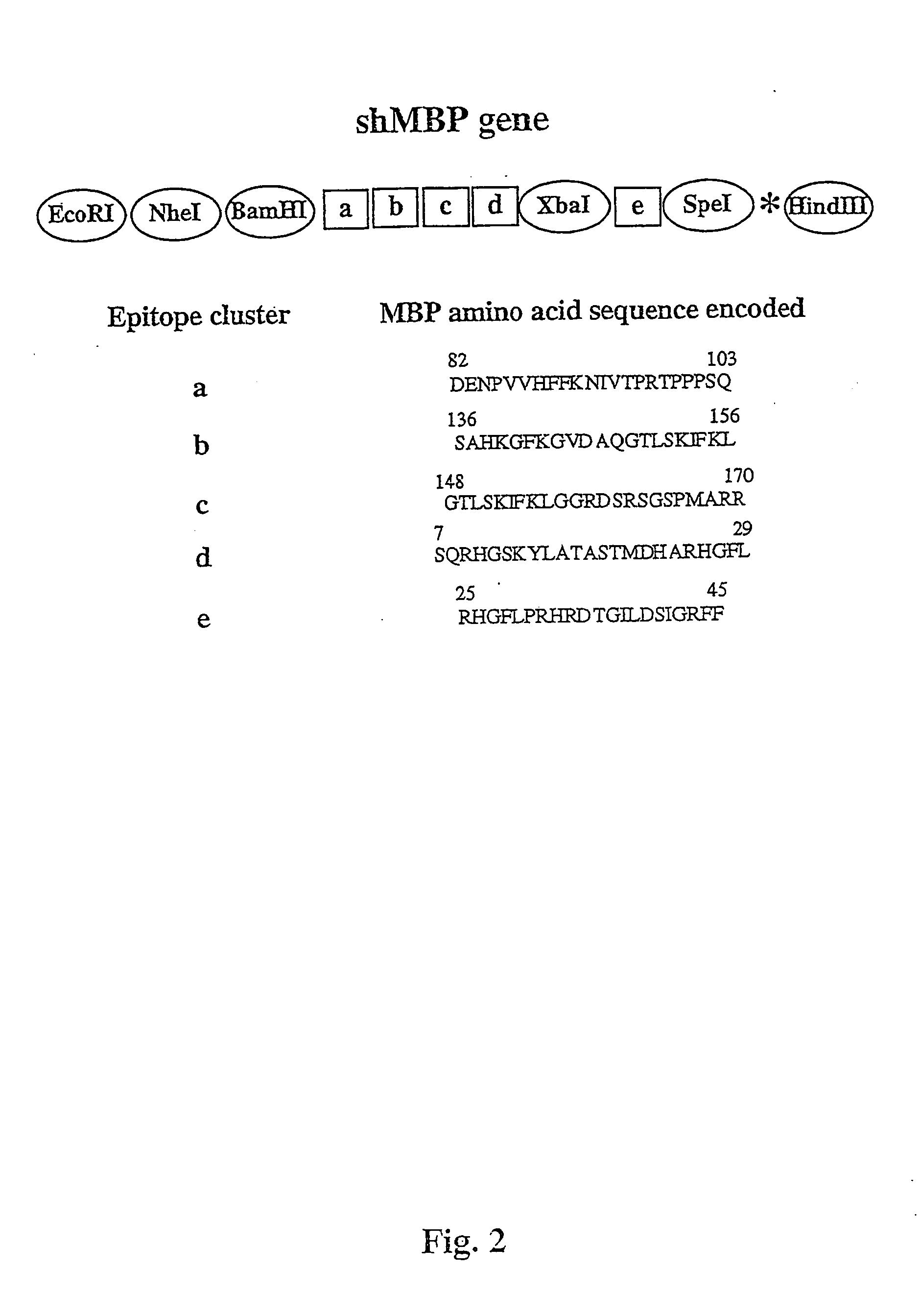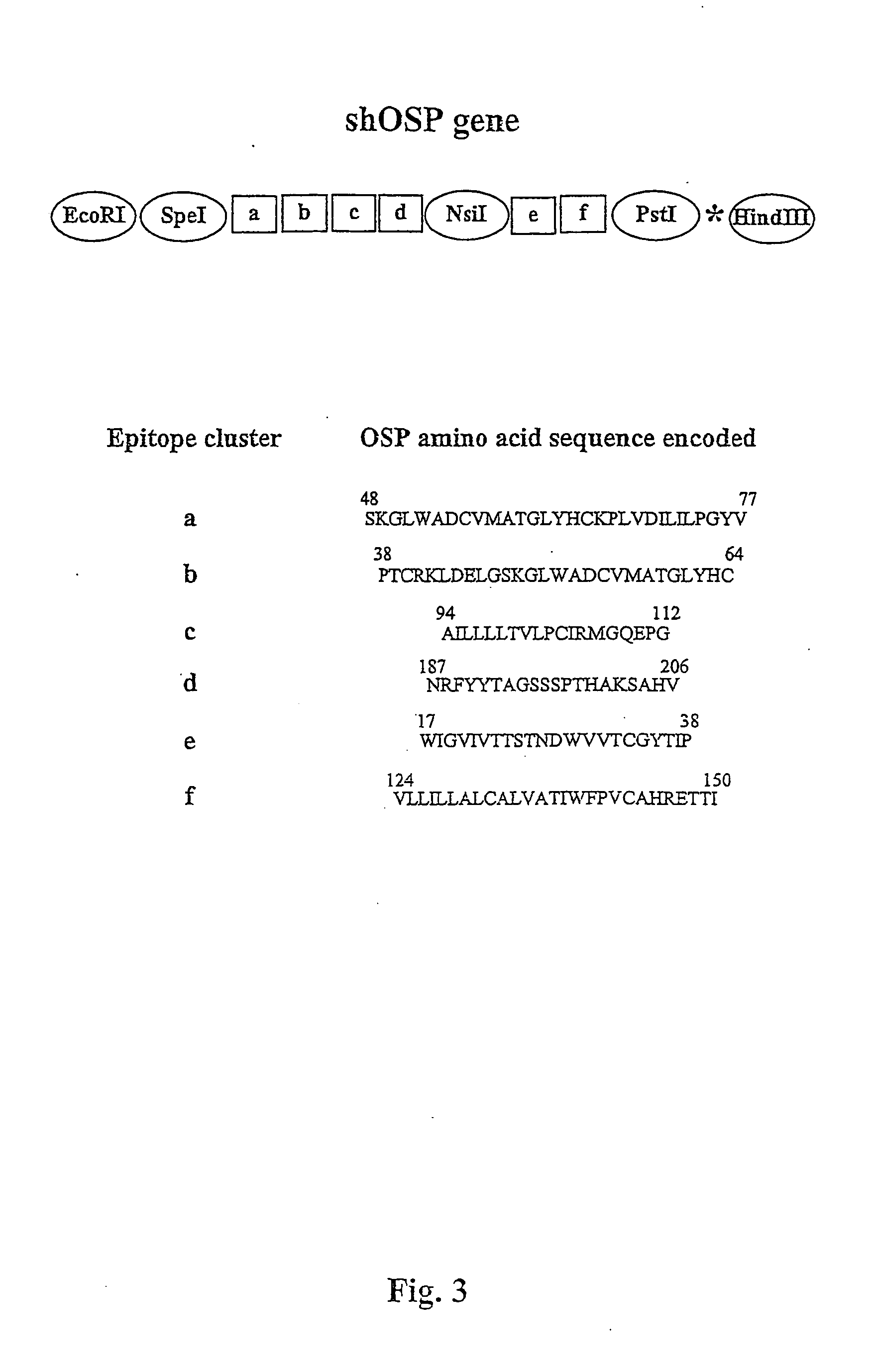Synthetic peptides and dna sequences for treatment of multiple sclerosis
a technology of applied in the field of synthetic peptides and dna sequences for treatment of multiple sclerosis, can solve the problems of not yet yielding an effective therapy for any of the autoimmune diseases, limited success in reducing the progression of the disease, and major medical problems of autoimmune diseases
- Summary
- Abstract
- Description
- Claims
- Application Information
AI Technical Summary
Benefits of technology
Problems solved by technology
Method used
Image
Examples
example 2
Construction of the shMBP Gene
[0126] The shMBP gene (FIG. 2) was constructed using for template generation the following primers: MBP.p1 (SEQ ID NO: 104), MBP.p2(rev), (SEQ ID NO: 105), MBP.p3 (SEQ ID NO: 106), MBP.p4(rev) (SEQ ID NO: 107), MBP.p5 (SEQ ID NO: 108), MBP.p6(rev) (SEQ ID NO: 109), MBP.p7 (SEQ ID NO: 110), MBP.p8(rev) (SEQ ID NO: 111), and for amplification the 5' and 3' reverse primers MBP.p1a (SEQ ID NO: 112), and MBP.p8a(rev) (SEQ ID NO: 113). The shMBP DNA sequence and derived amino acid sequence are represented by SEQ ID NO: 114 and SEQ ID NO: 115, respectively.
example 3
Construction of the shOSP Gene
[0127] The shOSP gene (FIG. 3) was constructed using for template generation the following primers: OSP.p1 (SEQ ID NO: 116), OSP.p2 (rev) (SEQ ID NO: 117), OSP.p3 (SEQ ID NO: 118), OSP.p4 (rev) (SEQ ID NO: 119), OSP.p5 (SEQ ID NO: 120), OSP.p6 (rev) (SEQ ID NO: 121), OSP.p7 (SEQ ID NO: 122), OSP.p8 (rev) (SEQ ID NO: 123), OSP.p9 (SEQ ID NO: 124), OSP.p10 (rev) (SEQ ID NO: 125), and for amplification the 5' and 3' reverse primers OSP.p1a (SEQ ID NO: 126), and OSP.p10a (rev) (SEQ ID NO: 127). The shOSP DNA sequence and derived amino acid sequence are represented by SEQ ID NO: 128 and SEQ ID NO: 129, respectively.
example 4
Construction of the shMOBP Gene
[0128] The shMOBP gene (FIG. 4) was constructed using for template generation the following primers: MOBP.p1 (SEQ ID NO: 130), MOBP.p2 (rev) (SEQ ID NO: 131), MOBP.p3 (SEQ ID NO: 132), MOBP.p4 (rev) (SEQ ID NO: 133), MOBP.p5 (SEQ ID NO: 134), MOBP.p6 (rev) (SEQ ID NO: 135), and for amplification the 5' and 3' reverse primers MOBP.p1a (SEQ ID NO: 136), and MOBP.p6a (rev) (SEQ ID NO: 137). The shMOBP DNA sequence and derived amino acid sequence are represented by SEQ ID NO: 138 and SEQ ID NO: 139, respectively.
PUM
| Property | Measurement | Unit |
|---|---|---|
| final volume | aaaaa | aaaaa |
| concentrations | aaaaa | aaaaa |
| myelin basic protein | aaaaa | aaaaa |
Abstract
Description
Claims
Application Information
 Login to View More
Login to View More - R&D
- Intellectual Property
- Life Sciences
- Materials
- Tech Scout
- Unparalleled Data Quality
- Higher Quality Content
- 60% Fewer Hallucinations
Browse by: Latest US Patents, China's latest patents, Technical Efficacy Thesaurus, Application Domain, Technology Topic, Popular Technical Reports.
© 2025 PatSnap. All rights reserved.Legal|Privacy policy|Modern Slavery Act Transparency Statement|Sitemap|About US| Contact US: help@patsnap.com



